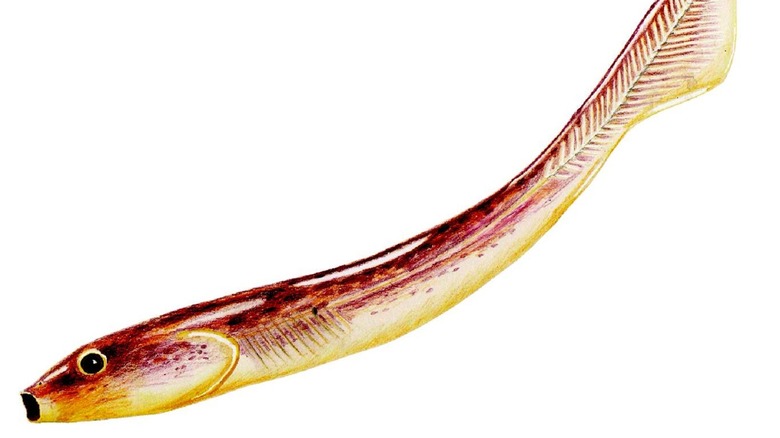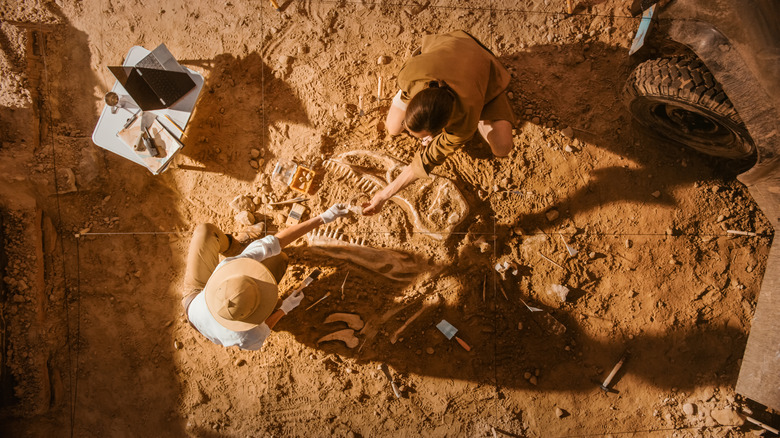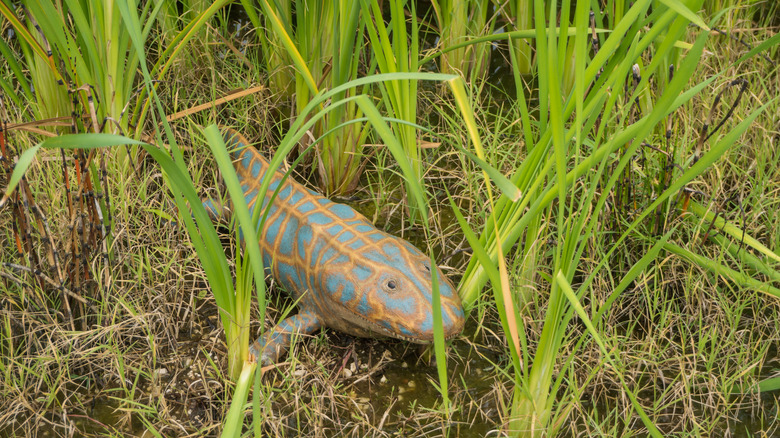This Fish-Like Creature May Be The Earliest Connection To Human Life
In 1890, scientists were puzzled at the discovery of fossilized remains of an eel-like prehistoric fish in Caithness, Scotland. According to Live Science, the identity and place of the 2.4 inch fossil on the evolutionary tree have remained a mystery since then. That was until researchers at the RIKEN Cluster for Pioneering Research in Japan stepped in and investigated the details in 2022.
The RIKEN researcher team used a high-resolution micro-CT scan in order to capture all the details of the unknown fossil remains (via News 18). According to the National Library of Medicine, a micro-CT scan is "a non-destructive imaging tool for the production of high-resolution three-dimensional (3D) images composed of two-dimensional (2D) trans-axial projections, or 'slices', of a target specimen." This technology allowed the team to create a full 3D model of the fossil without taking it apart. What they discovered was the remains of an ancient creature known as Palaeospondylus gunni, a 390-million year old fish-like creature (via WION).
Before the fossil was identified, there were several incorrect guesses
After the RIKEN research team imaged the strange eel-like fossil, determining where it fell on the evolutionary tree was the next step. According to lead researcher Tatsuya Hirasawa, "to place Palaeospondylus in the evolutionary tree, identification of each skeletal element is prerequisite," (via Live Science). This was a difficult task due to the fossils small size and because the skeleton had been compressed during fossilization, but the micro-CT scans the team had taken made the job much easier.
The study Hirasawa and his team published in Nature magazine on their identification of the fossil was surprisingly not the first. Several previous attempts had been made to identify the fossil in the 130 years since its discovery. In 2004, an article in American Scientist claimed it was a primitive lungfish. In 2016, Tatsuya Hirasawa himself published a study in Zoological Letters suggesting it was actually a relative of the hagfish. It wasn't until better imaging and study of the fossil in 2021 that Hirasawa and his team were able to correctly identify it as Palaeospondylus gunni in their article published in Nature.
Palaeospondylus gunni may be an early ancestor of humans
Once Tatsuya Hirasawa and his team were able to identify Palaeospondylus gunni, its place on the evolutionary tree could finally be determined. What they found was a possible early ancestory of humans. As Hirasawa put it, "Our analyses provided an inference that Palaeospondylus was a close kin to vertebrates having limbs (with fingers) and those having limb-like fingers," (via All That's Interesting). This implies that Palaeospondylus may have been an ancestor of Ichthyostega, what scientists consider to be one of the first creatures to crawl out of the water and begin walking on land (via World Atlas).
Knowing the identity of Palaeospondylus gunni and other ancient creatures can help us fill in the gaps along the evolutionary tree from the earliest microbes to humans and all the other unique animals we see today. While it took over 130 years for scientists to study Palaeospondylus, our improving technology could allow us to study and identify strange fossils at a faster rate than ever before.


